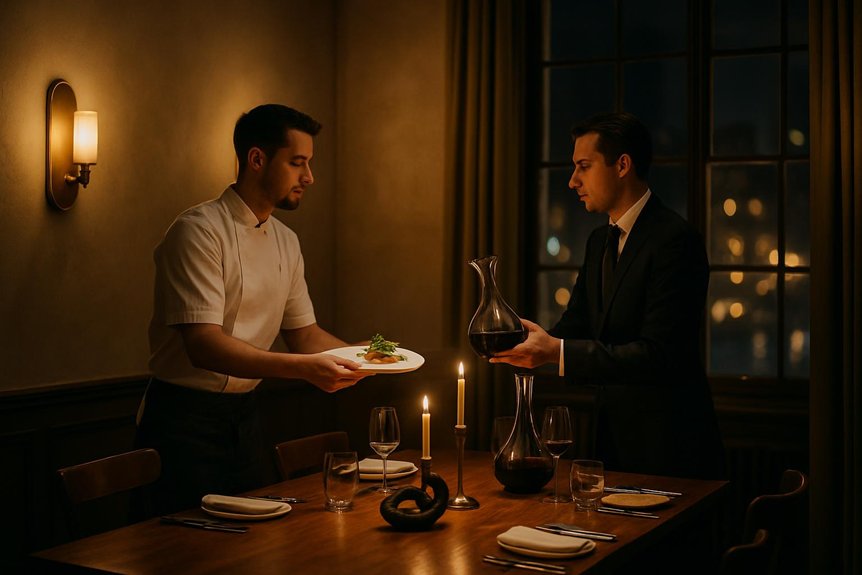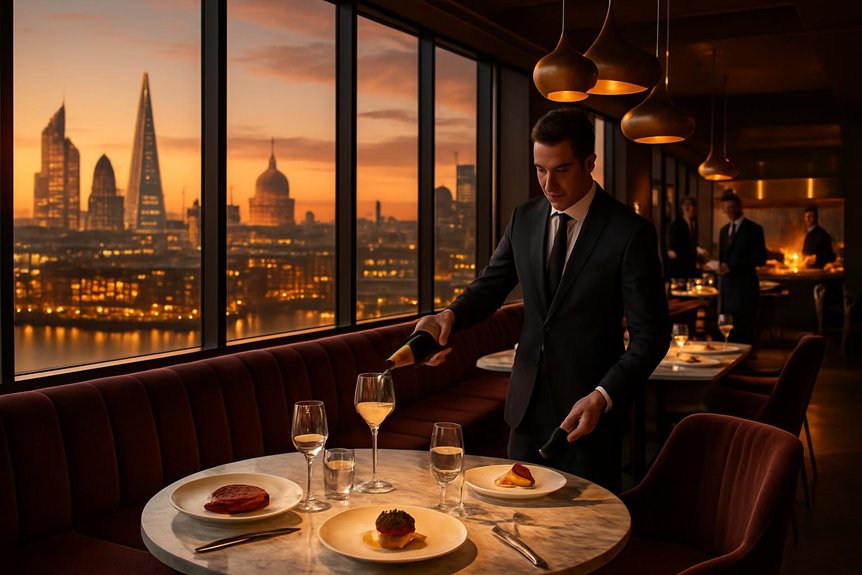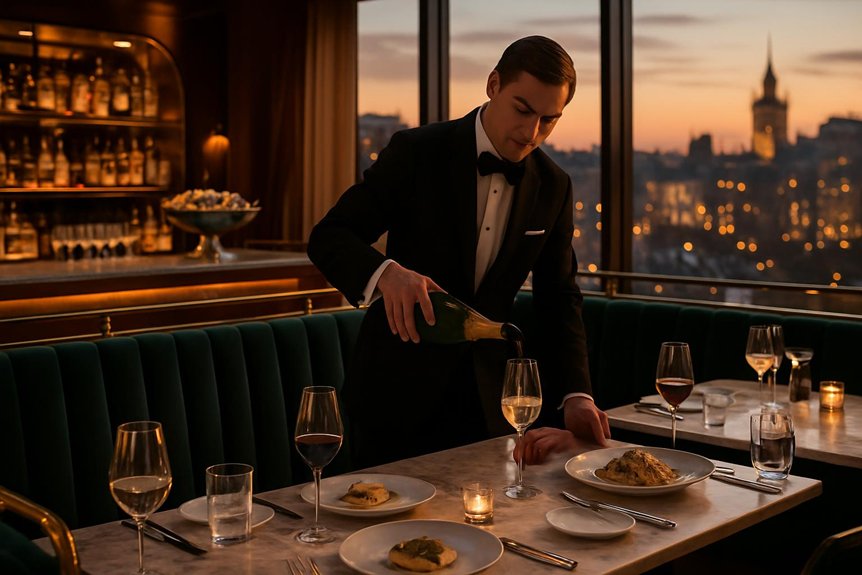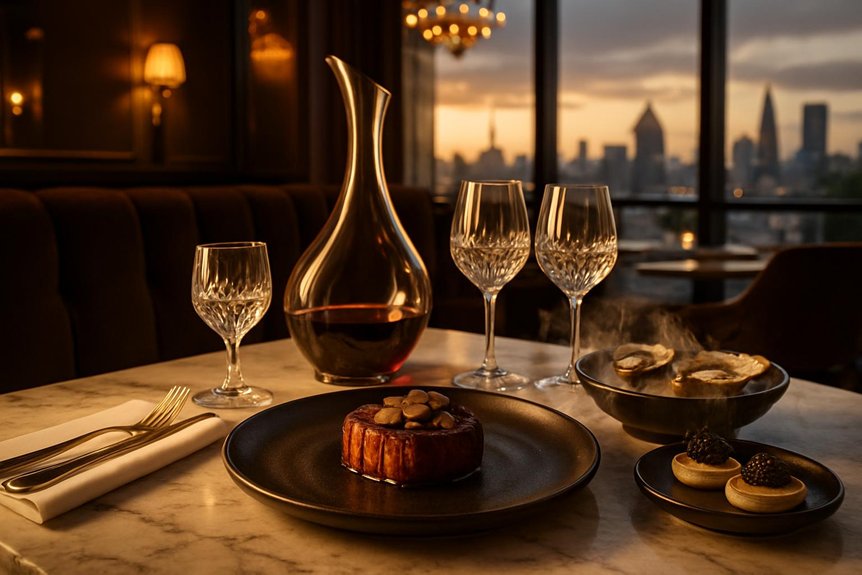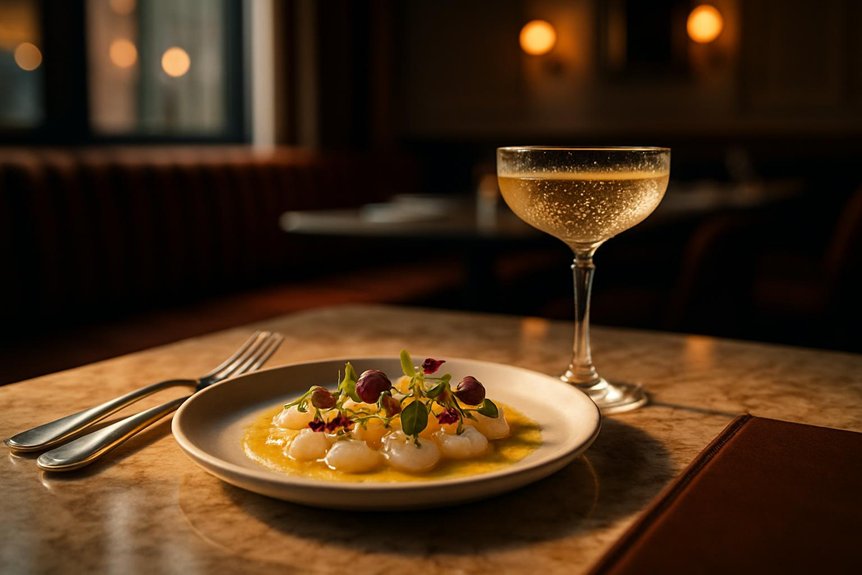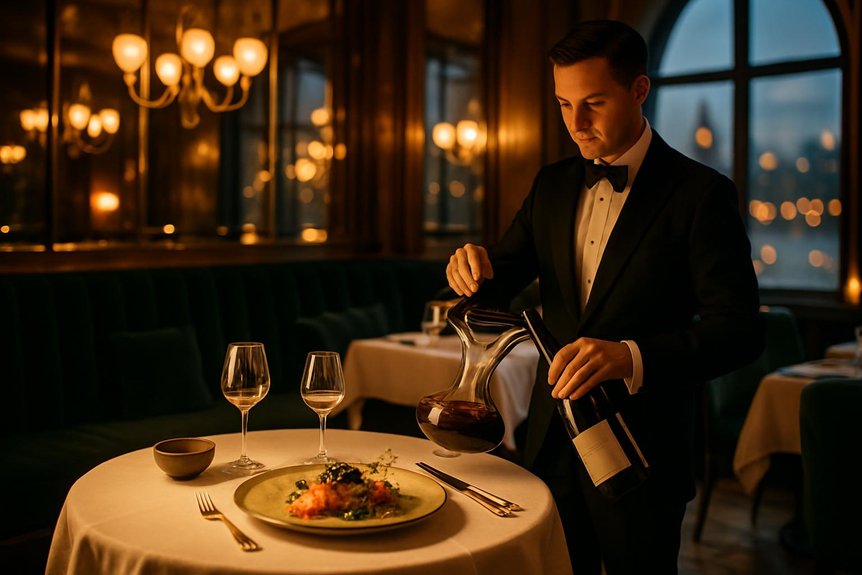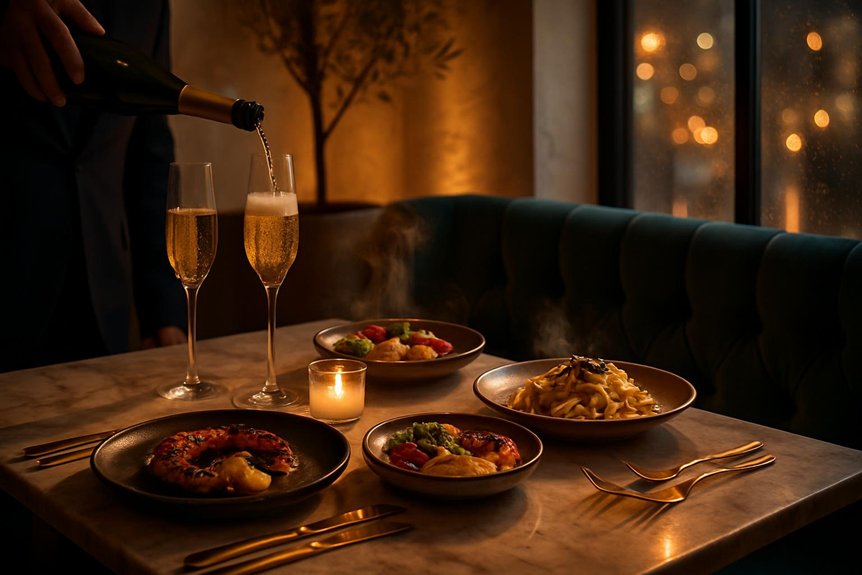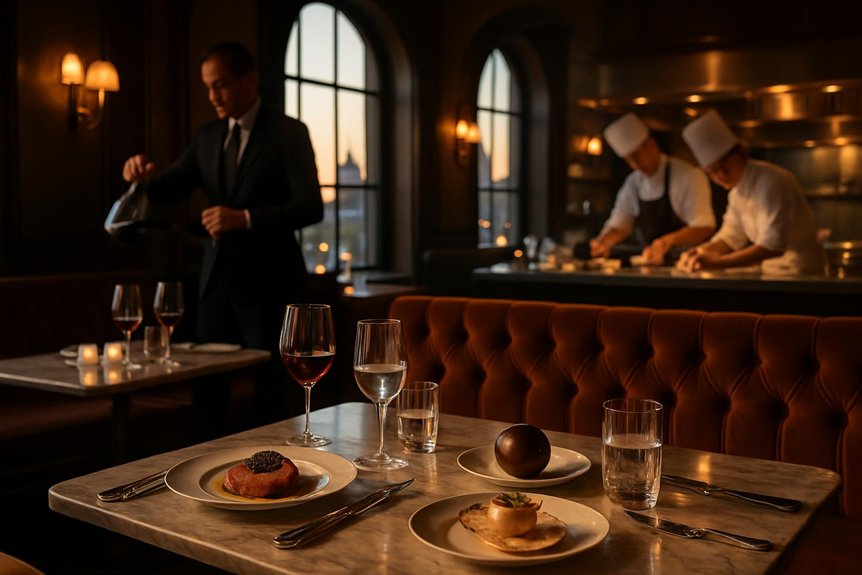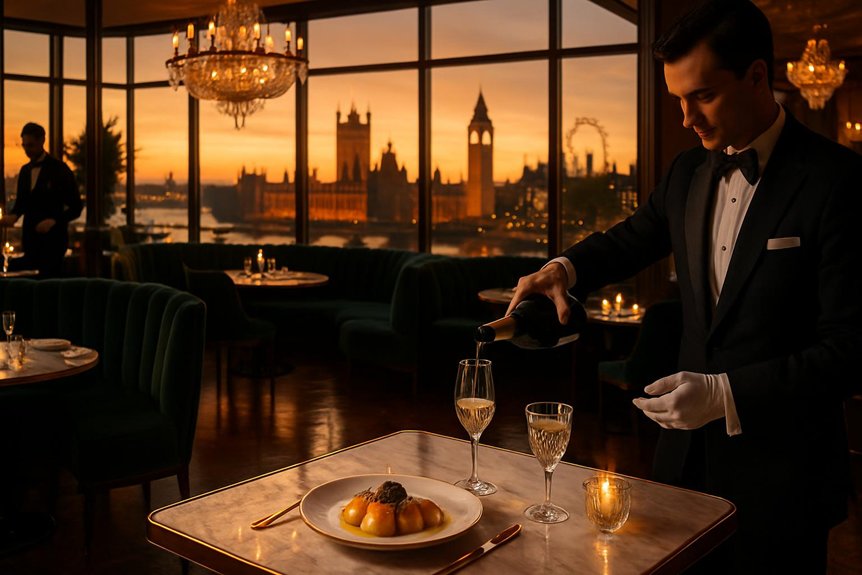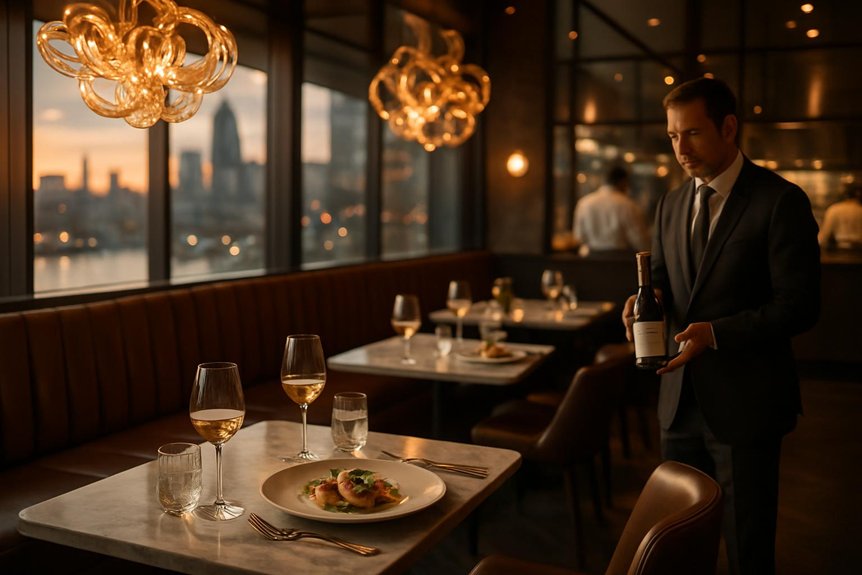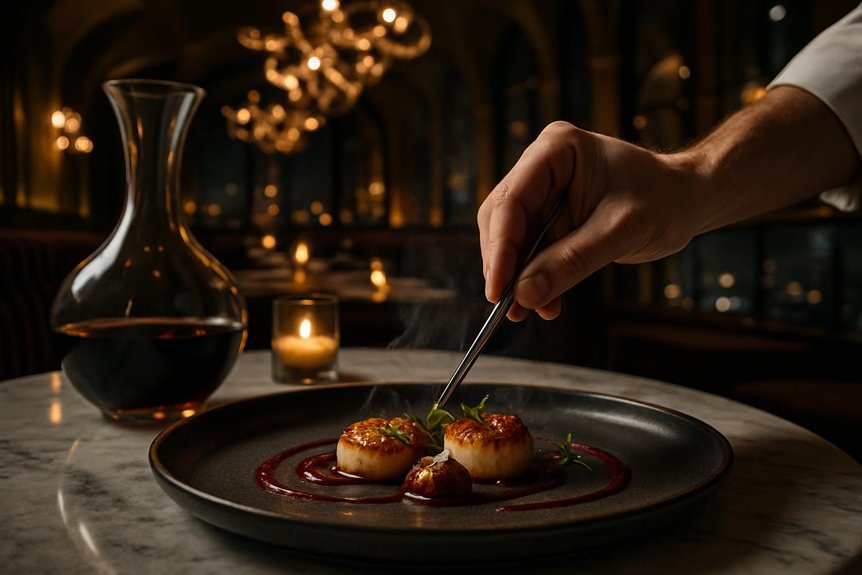Meraki and More quietly reshapes London’s idea of luxury dining. Their chefs fuse craft and conscience, menus that feel personal without theatricality. Rooms are curated like lived-in galleries, provenance named and celebrated. Sustainability lives in technique as much as sourcing. There is a clear, measured intent behind each choice — enough to invite further discovery, though the full story unfolds only when one follows the trail.
The Meraki Ethos: Crafting Soulful Luxury
The Meraki ethos in London’s luxury dining scene insists on infusing every element—ingredient selection, service choreography, and interior design—with intentional care, treating creativity and craft as inseparable from hospitality.
This approach prioritizes provenance and seasonality, framing farm to table sourcing as a moral and aesthetic choice rather than a trend. Spaces shaped by meraki favor restrained elegance: lighting, tableware and pacing calibrated to reveal each course’s narrative.
Staff perform attentive, unobtrusive service that foregrounds guests’ sensory experience without theatricality. Menus emphasize balance and restraint, allowing culinary innovation to emerge through technique, subtle contrasts and respectful reinterpretation of tradition.
The result is consistent: dining that feels considered, intimate and resonant, where every detail communicates purpose and respect.
To complete the experience, Meraki offers a vibrant nightlife with dining, dancing, and great vibes every Thursday, Friday, and Saturday.
Chefs Who Wear Their Hearts on the Menu
Moving from spaces shaped by meraki to the people who populate them, London’s leading chefs translate personal histories and convictions into menus that read like memoirs. They foreground farm to table sourcing, cultivating relationships with small growers and fishers to guarantee provenance informs flavour. Culinary narratives often reference heritage — immigrant recipes reimagined, seasonal British larder elevated — without sentimental excess. Service and menu sequencing become extensions of intent: dishes arranged with innovative plating that directs attention and evokes memory. Kitchens operate as small studios where technique and ethics intersect, producing courses that are intimate yet exacting. Critics note consistency in purpose over trendiness, and diners respond to authenticity that balances restraint, generosity and unmistakable personal voice. The Meraki Luxury Restaurant offers a relaxed dining experience, with an open kitchen led by celebrity chef Athinagoras Kostakos, creating an atmosphere that combines both innovation and tradition.
Intimate Design: Spaces That Tell a Story
A room in a London restaurant often reads like a memoir in miniature: material choices, lighting and table placement coax a narrative as deliberately as any menu. Designers arrange low-lit alcoves, worn woods and tactile fabrics to evoke memory and place, allowing Cultural storytelling to emerge without exposition. Small tables and varied sightlines create privacy while choreographing movement, encouraging diners to encounter sequenced moments. Sound, scent and texture are composed for subtle Sensory engagement; a muted playlist, a linen napkin’s weight, a curated scent tether patrons to the house’s identity. Intimate proportions favor human-scale rituals, prompting conversation and slow tasting. In these rooms, design is not ornament but a communicative device, shaping mood, expectation and the cadence of a meal. Meraki, for instance, is recognized for its romantic atmosphere that heightens the dining experience, making each occasion feel special and intimate.
Sourcing and Sustainability as Signature
From rooms that shape memory, attention extends outward to the provenance of what arrives at the table. Chefs and restaurateurs prioritize local ingredients, forging direct relationships with farmers, fishers and artisanal producers to assure traceability and seasonal integrity. Menus change as supply permits, framing provenance as part of the dining narrative.
Sustainability is operational: energy-efficient kitchens, waste audits, composting and partnerships that redirect surplus to community programs. Eco friendly practices inform procurement, packaging and service, reducing single-use plastics and favoring recyclable or reusable alternatives.
Transparency appears in ingredient lists and supplier stories, inviting diners to contemplate environmental impact. In this way, sourcing and sustainability become distinguishing signatures, aligning luxury with responsibility and demonstrable stewardship.
How London’s Dining Scene Is Being Remade
As neighbourhoods evolve and diners’ expectations shift, London’s dining scene is being remade through a blend of experimentation, recalibrated business models and cross-disciplinary collaboration.
Observers note a pivot from purely opulent service to nimble formats: pop-ups, tasting rooms and neighbourhood counters that mix accessibility with craftsmanship.
Fusion cuisine continues to challenge tradition, while hospitality brands recruit designers, technologists and environmentalists to reconceive menus and spaces.
Celebrity chef-led ventures now share stages with younger cooks whose provenance stories drive loyalty.
Investment flows toward resilience — flexible leases, diversified revenue and lower-waste kitchens — reshaping risk appetite.
The city’s culinary identity is thus simultaneously global and hyper-local, adaptive and intentional, prioritising experience, ethics and enduring relevance.
- Pop-ups testing concepts
- Designer-chef collaborations
- Tech-enabled reservations
- Low-waste operations
Conclusion
Meraki and More have quietly reshaped London’s idea of luxury dining, melding provenance, sustainability and intimate design into experiences that feel both personal and progressive. Their emphasis on seasonality and storytelling resonates: 68% of London diners now say provenance influences where they eat, underscoring a market shift toward ethical, craft-driven cuisine. As chefs, spaces and sourcing align, these pioneers turn opulence into meaningful connection, charting a new course for the city’s culinary identity.
